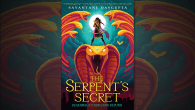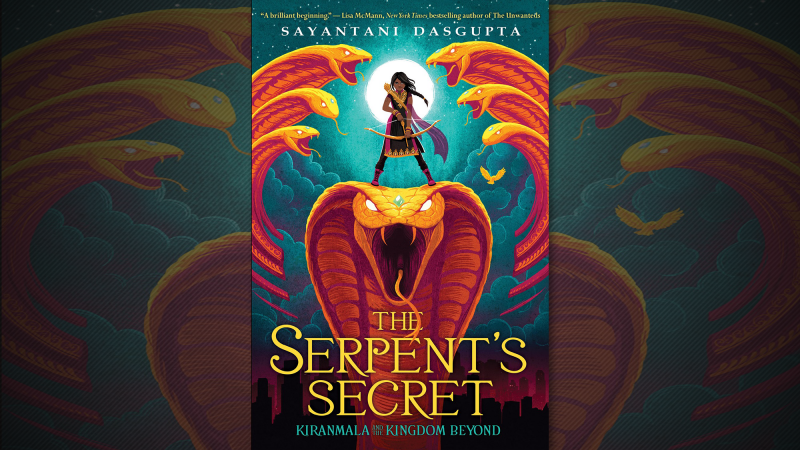 I was excited to read The Serpent’s Secret by Sayantani DasGupta because the description promised me something I had rarely seen in English-language books: a Bengali main character. As I read the novel, nostalgia hit me like a ton of bricks (but in a good way) as the story prompted me to look back at my own childhood in Bangladesh full of stories about ghosts, monsters, and spirits. Thus, I read the novel from a unique perspective because I grew up hearing the same Bengali folktales that the main character, Kiran did!
I was excited to read The Serpent’s Secret by Sayantani DasGupta because the description promised me something I had rarely seen in English-language books: a Bengali main character. As I read the novel, nostalgia hit me like a ton of bricks (but in a good way) as the story prompted me to look back at my own childhood in Bangladesh full of stories about ghosts, monsters, and spirits. Thus, I read the novel from a unique perspective because I grew up hearing the same Bengali folktales that the main character, Kiran did!
DasGupta draws her inspiration from the Bengali storytelling traditions of West Bengal, India, and Bangladesh. In addition, the characters Kiranmala, Neelkamal, and Lalkamal are loosely based on a classic children’s anthology from the 1930s called Thakurmar Jhuli (Grandma’s Satchel). There’s also an animated series inspired by the book with tales of mythical creatures like rakkhosh (demons) and pakkhiraj (flying horses).
As a culture, we love our ‘bhooter golpo’—ghost stories. I remember at sleepovers with my cousins, the younger kids would beg the older kids to narrate supernatural stories at night. Power outages were common in my hometown Dhaka at the time, and so, sitting in the piercing glow of electric lanterns we would dive into stories about demon possessions and monster attacks. That, of course, meant I would be up all night in fear of spirits coming to haunt me. Reading about Kiran’s demon-slaying adventures felt like going on an Easter egg hunt for forgotten memories, thanks to the references to Bengali culture woven into the plot.
For example, Tuntuni the bird sings the snake-charming song ‘Baburam Sapure’ in the story to help Kiran and Neel get past a monster, which I was pleasantly surprised to recognize as a children’s nursery rhyme. Mind you, it took me some time to recognize that Tuntuni’s English version of the poem was the same one I had learnt in Bengali as a child. The inclusion of this poem in the novel is also a wonderful homage to the serpent-centric folklore popular in village communities. Additionally, I appreciated Kiran and Neel’s love for sandesh, one of the sweets we Bengalis are famous for; I’m hoping my favorite dessert, roshmalai, makes an appearance in the second book of the series!
While I’m not an interdimensional princess (not that I know of, anyway), The Serpent’s Secret let me indulge in a familiar environment that I hadn’t found in other novels. It was refreshing to find a story I could relate to, and see parts of my South Asian heritage represented in a work of fiction. Moreover, I can appreciate how I would’ve loved this sense of familiarity and perspective when I was Kiran’s age. As DasGupta herself said, there’s a dire need for superheroes of different backgrounds and identities. Children from diverse backgrounds should have the chance to dream of being superheroes, which can only happen when they see themselves reflected in their books. I’m eager to see what’s next for Kiran, and take another walk down memory lane!
Luckily, I don’t have to wait too long—the second book of the series, Game of Stars, will be released in Spring 2019.






